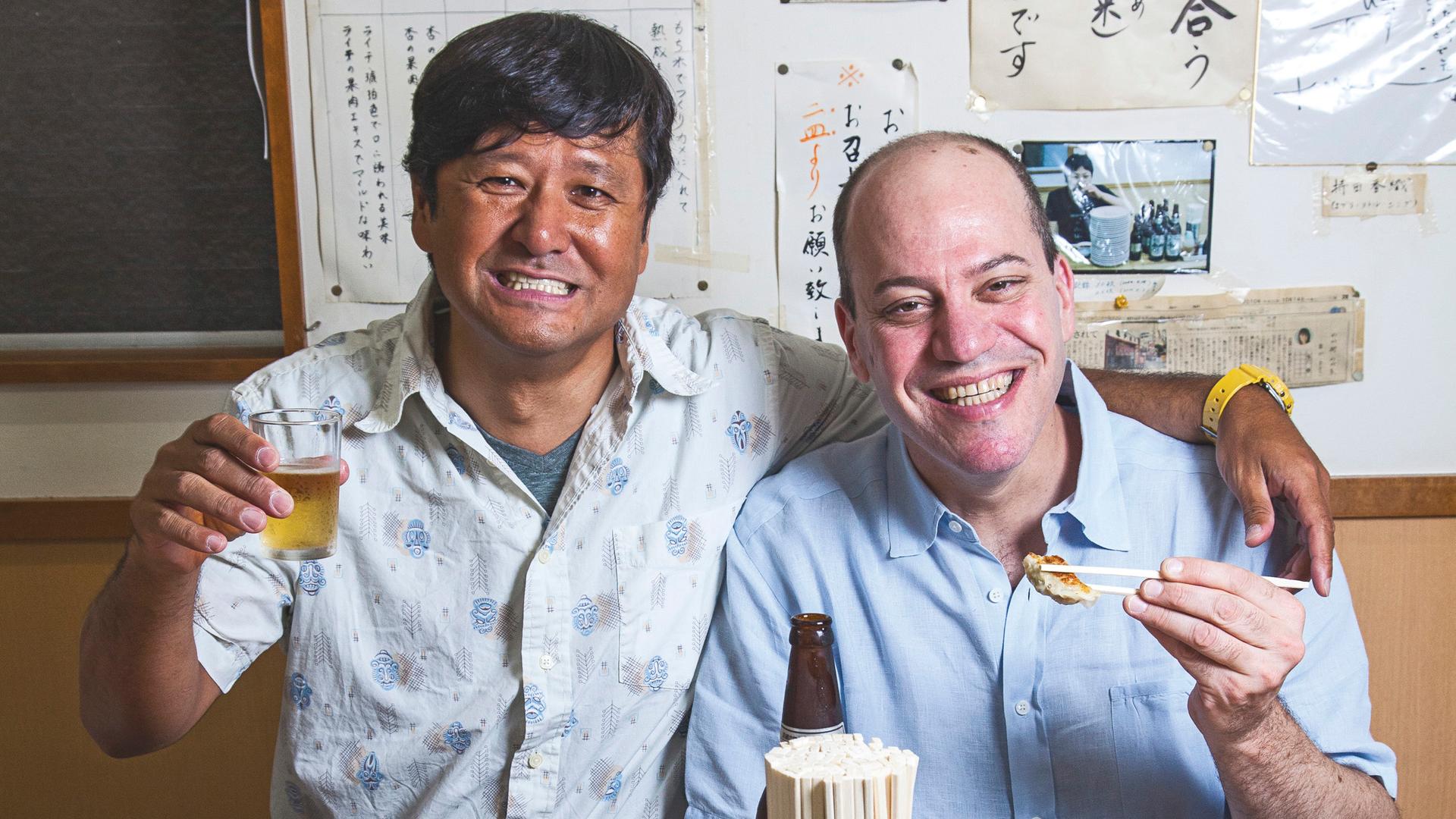Why these two New York chefs consider curry Japanese soul food
Tadashi Ono (left) and Harris Salat.
Chefs Harris Salat and Tadashi Ono both own Japanese restaurants in New York.
Together, they've written a cookbook called "Japanese Soul Cooking."
It's not about fancy stuff like sushi, but rather, Japanese comfort food – things like gyoza, soba, tempura – and curry.
"In Japan, curry was originally considered a European food, not a South Asian food," says Salat. “It was actually an import from Britain, via the British navy. What came to Japan was curry powder, and it’s a totally different animal from a curry or vindaloo you would get in the north of India.”
It’s thicker and heavier, so it’s easier to mix with rice and eat it” says fellow chef Ono.
When he was a kid and heard there was curry for dinner, he was always very excited. Ono is not sure why.
“Maybe the spices give you a high similar to sugar,” he says.
For Salat, curry is also eminently customizable: “You can make Japanese curry with a million different things. Chicken, pork, beef, vegetables, fish.”
It’s also geographical. “Wherever you go, there’s a regional curry,” explains Ono. “Hiroshima has an oyster curry, in Hokkaido they use milk, butter, and a lot of potatoes. Ten thousand different places have 10,000 different curries,” says Ono.
One of which is the “battleship curry” served up in Japan’s naval forces. Ono and Salat found dozens of different curries on the website of the Japanese Navy.
“Every ship has its own recipe,” says Salat. And Friday is curry day in the navy. “The ingredients we saw were crazy, coffee, chocolate, cheese, blueberry jam.”
Recipe for Battleship Curry
by Harris Salat and Tadashi Ono
This is the curry served every Friday aboard the Japanese naval patrol ship Hachijo,which we adapted for four, instead of 400! We love the curry creativity of Japanese navy cooks. Check out the ingredients in this version: cheese, honey, ketchup, a hit of strong coffee—the last one, we guess, to keep sailors extra alert when the Klaxon blares!
When we cooked it up, we were surprised how tasty and complex it came out. The cheese melts into the curry, adding another layer of flavor, and thickening it, too. Add more pork if you like your curry meatier; Japanese cooks usually go lighter on the protein.
And don’t forget, navy curry isn’t navy curry without salad on the side and a glass of milk.
Serves 4, with leftovers
- 1 pound boneless pork shoulder, cut into bitesize cubes
- 1 teaspoon salt
- 1 teaspoon pepper
- 2 tablespoons vegetable oil
- 1 tablespoon butter
- 1 pound medium onions (about 3), peeled and coarsely chopped
- 3 cloves garlic, thinly sliced
- 8 ounces carrots (about 2 medium carrots), cut rangiri style
- 5 cups torigara stock or water
- 5 tablespoons curry powder
- 3 tablespoons tonkatsu sauce, store-bought or homemade
- 2 tablespoons Japanese Worcestershire sauce
- 1⁄2 teaspoon ichimi togarashi, or
- 1⁄4 teaspoon cayenne
- 2 teaspoons honey
- 2 tablespoons ketchup
- 2 medium Idaho potatoes (about 2⁄3 pound),
- peeled, cubed, and placed in bowl of water
- 1 tablespoon katakuriko (potato starch)
- 1 tablespoon water
- 1 cup grated Parmesan cheese (about 2 ounces)
- 1⁄2 cup grated mild Cheddar cheese (about 4 ounces)
- 1⁄2 cup brewed black coffee
- Steamed rice, for serving
Instructions:
- Season the pork with the salt and 1/2 teaspoon of the pepper.
- Preheat a large pot over high heat. Add the oil and butter.
- When the butter has melted, add the pork.
- Cook, stirring frequently, for about 2 minutes, until the exterior of the pork turns white.
- Add the onions, and cook, stirring constantly, for 2 minutes.
- Add the garlic and carrots and cook and stir for 2 minutes more.
- Add the stock to the pot.
- When the liquid boils, reduce the heat to low and add the curry powder, tonkatsu sauce,
- Worcestershire sauce, remaining 1/2 teaspoon black pepper, ichimi toragarshi, honey, and ketchup.
- Mix well to combine the seasonings.
- Cover and simmer for 30 minutes, mixing occasionally.
- Add the potatoes to the pot, cover, and simmer for 15 minutes.
- While the curry is simmering, mix together the katakuriko with the water in a small bowl.
- Add the Parmesan cheese, Cheddar cheese, coffee, and katakuriko mixture to the pot.
- Simmer for 5 minutes more, mixing occasionally.
- Serve with steamed white rice, a side salad (see below), and a glass of milk.
– Reprinted with permission from Japanese Soul Cooking by Tadashi Ono & Harris Salat, copyright © 2013. Published by Ten Speed Press, a division of Random House, Inc. –
